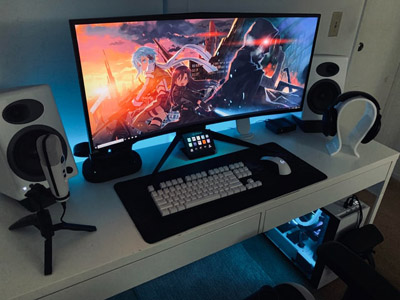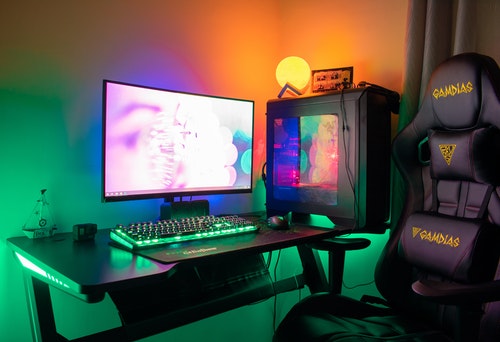
Steam is a PC gaming juggernaut and commands a huge market share. A lot of gamers face jitters and lag during a game and may want to allocate more RAM to Steam games for a smoother experience.
However, you cannot manually allocate more RAM to Steam Games.
Yes, I’ve thought about allocating RAM manually to Counter-Strike: GO and hit those sweet 120 frames per second. Unfortunately, there is no way we can do this on a system level. Fear not though! We can still get some good performance out of your gaming rig and give polite suggestions to the system. Read on to know how you can theoretically allocate more RAM to Steam games and get a good performance.
Contents
We can’t add more system RAM to Steam games, but we can still allocate RAM and more resources to them. This way we get a good performance out of our gaming systems and finally nail some quick scope kills in Call of Duty. Here is what to do:
This may seem surprising, but the Windows operating system version has a big impact on your gaming experiences. Did you know, a 32 Bit version of Windows can only have 4 GB of usable computer RAM? That’s right, if you are planning on gaming on a modern gaming PC, a 32 Bit Window installation can seriously cripple the performance. Here is how you can check which version of Windows you are running:
Windows 11
Windows 10
Windows 8
Windows 7
Fastest Way that Works on All Windows

Giving a higher priority to a program or Steam games can help the games run better. However, it is not going to work for all games and all systems. Still, it’s as close to adding more RAM to Steam games as we can get. Setting a high priority on a game lets the system know that the game is highly important and needs to be prioritized. Here is how you can do it:
That’s it, now the system knows that the game is super essential and needs all the resources it can spare, including RAM.
I don’t recommend you go with High or Real-time as these options can sacrifice functions of other programs. I haven’t had issues personally running Steam games on Above Normal and would recommend that you do so as well. We don’t want resources from critical system functions siphoned by a Pokemon Emulator.
Did you know your browser tabs eat memory for breakfast? It’s true, the innocent-looking Chrome with 20 tabs open can have a severe impact on your gaming performance. Especially if the browser has media playing on it. If your game is jittery and lagging, make sure your browser, unnecessary apps, or other resource-hungry background applications are not running.
Having Adobe Premiere render a video while playing games cannot give you the best performance. Make sure you close all unnecessary background apps and also keep them out of the Start-Up list. Running Twitch live streams in the background will also slow down not only your PC but also your network, depending on the bandwidth.
With a near-infinite number of PC hardware combinations, it is hard to release a video game that can work flawlessly on all gaming rigs. Even the most polished video games have a few bugs in them. Naturally, a lot of Steam games release unoptimized on PC. They are gradually improved with patches if the company decides to go that route. So making games run smoothly on hardware that should, in theory, be enough is the charm of PC gaming.
This is where the Steam Game Launch Options come in. It is rare, but I’ve had most games run better after using Launch Options. These are basic commands that Steam uses to run different games a certain way. For example, if you type –fullscreen in any game’s launch options, the game will always run full screen. You’ll need to check codes on a per-game basis, but they are readily available online.
In order to access the Steam Game Launch Options, open the Steam application and:
For example, DOTA 2 runs better in Direct X 11 mode on my cousin’s old PC. So we simply searched how to make it run in DX11 mode. By simply entering –dx11 in the Steam Game Launch Options, we were able to run it smoothly. Another cool code is –novid, which works on all Valve games and removes the introduction video that plays every time. Now, your whole house won’t wake up when you run Half-Life 1.

Disabling your antivirus can free up system resources that can add more RAM to Steam games. Some modern antiviruses can automatically detect you are playing a video game and stop resource-hogging scans until you end the gaming session. Some even come with a dedicated game mode that you can activate with one click.
If none of the automatic options are available for you, you can manually turn off the antivirus for a little while. You can re-enable it once you are done playing video games and have a safe PC and good gaming performance.
This is going to hurt, but lowering the graphics settings can help improve performance. The good thing is that this has a negligible impact on RAM usage. Lowering the graphics setting still uses almost the same amount of available RAM because it still needs to transfer the same amount of data. However, lowering the settings can give your CPU and GPU some breathing room, and they can perform better.
Settings like texture quality, view distance, NPC count, terrain detail, and even ray tracing can take up more RAM. So sliding the notch from “very high” to “normal” might do the trick for you.
There is no way to sugarcoat this, if all the games are not running well you may need to know how much RAM they require. They may need more RAM. The best way to allocate more RAM to Steam Games is to have more RAM in the system. The prices of RAM sticks are constantly getting readjusted, and you can get some good deals if you are on the lookout.
Be warned, though, allocating more RAM won’t have a huge impact on the quality of the graphics of your games. Hitting that lower required RAM number is all you can aim for. Find out how much RAM a game needs, and if it requires 8 GB more RAM, running it with just 4 GB won’t be a pleasant experience. The speed of RAM also doesn’t matter a lot in most cases.
Remember, adding more RAM won’t magically make your games run better. If the bottleneck is your old CPU or GPU, more RAM can help but not a lot.
While we can’t add more RAM to Steam games, we can certainly make do with as much RAM as we have. Freeing up system resources and telling the computer to run games as a priority can help with better performance.
As an owner of an aging Intel 5th generation PC and NVidia 970 GPU, I have some experience in running games smoothly way below the recommended specifications. Lowering the graphics, resolution, and even capping the frame rate to 30 has helped in the long run. Of course, having 16 GB more RAM rather than 8 also helped in playing most modern titles. I’m sure you’ll use these tips and tricks to have a much smoother gaming experience. Game on!
